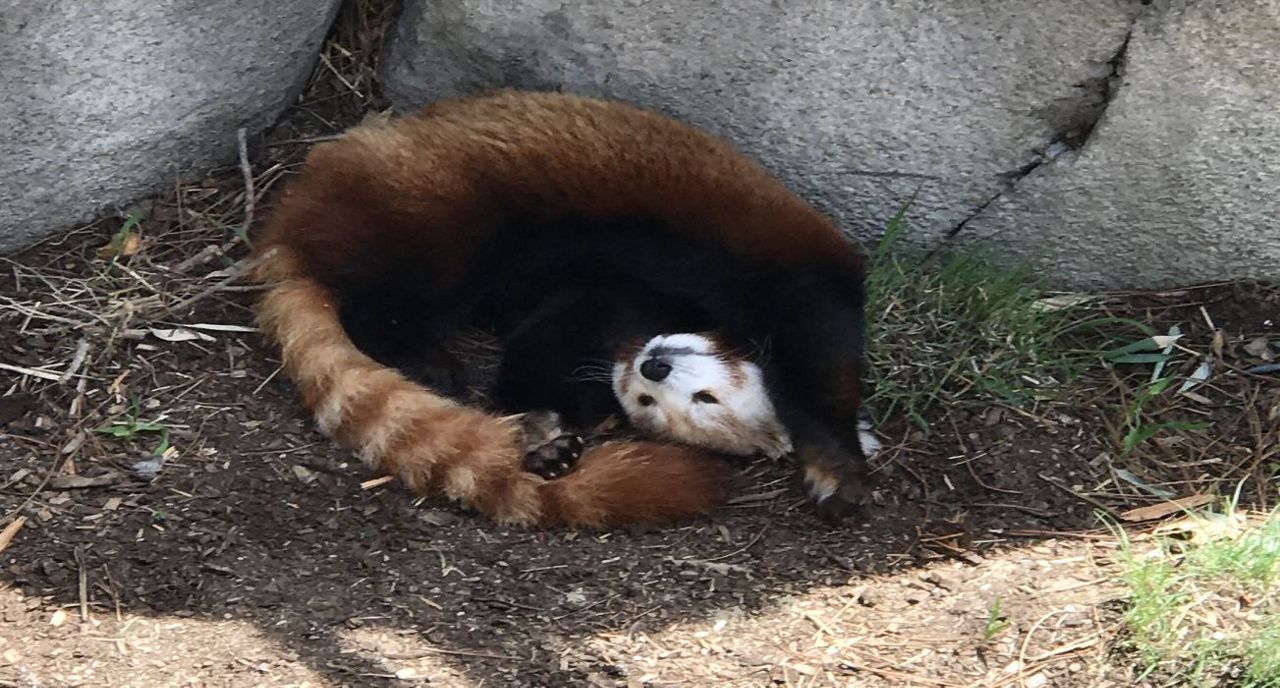AKRON, Ohio — Accreditation by the Association of Zoos and Aquariums is the highest global distinction a zoo or aquarium can achieve, making the Columbus Zoo and Aquarium’s recent loss of that title painful, said Akron Zoo President and CEO Doug Piekarz.
“This is truly the gold standard for animal care, the gold standard for veterinary care, the gold standard for guest engagement and education, and conservation from an impact standpoint, because accreditation makes you demonstrate with data that you are meeting all of the standards,” he said. “All of them.”
Piekarz would know.
AZA accredited since 1989, the Akron Zoo received a perfect accreditation inspection report last summer, which in the past 50 years, only two other facilities have achieved, the AZA said, which points to “the stringency and comprehensive nature of the AZA standards and the rigorous process of inspection.”
Piekarz knows something about that, too. He’s been trained for more than a decade to serve as a member of an AZA inspection team, although he played no role in the inspection that led to the Columbus Zoo’s failure to achieve accreditation.
The Columbus Zoo made news this week when the AZA stripped it of its accreditation for financial missteps by former leadership and, weighing more heavily, the AZA said, mishandling of baby big cats, which were being transferred with non-AZA members for entertainment purposes.
The Columbus Zoo, and its former president Jack Hanna, were the targets of a recent documentary called “The Conservation Game,” which took aim at the zoo’s alleged mishandling of big baby cats.
In response, the Columbus Zoo outlined the improvements recently made and said it will appeal the AZA’s decision, which Piekarz emphasized isn’t made lightly.
He likens AZA accreditation to hospital systems striving to earn world-class cardiac-care or cancer-care distinctions.
“The inspection doesn't leave a stone unturned,” Piekarz said. “When organizations don't measure something, they're not effectively managing it. And AZA accreditation requires that.”
While the Columbus Zoo has problems that must be addressed, the facility is not lacking in a dedicated, professional staff, Piekarz said.
“The Columbus Zoo has some of the most professional, dedicated and passionate wildlife biologists, conservationists, educators that I've ever met, and my heart bleeds for them,” he said. “The loss of accreditation, which everybody works for in an accredited zoo, hard, on a daily basis, because we recognize that it moves our mission forward to save wildlife and wild places. The loss of that accreditation is just painful.”
The AZA also acknowledged the work of the Columbus Zoo staff in a statement.
“To the employees of Columbus Zoo and Aquarium, we acknowledge your good work,'' the AZA said. “Much of the accreditation inspection report was exceedingly positive and reflective of your professionalism. We hope to see Columbus Zoo and Aquarium and you back within our community soon.”
The goal of the nonprofit AZA, which operates globally, is to advance zoos and aquariums in the areas of conservation, animal welfare, education, science and recreation. Out of thousands of animal-related organizations in the U.S. and 12 other countries, 241 are AZA accredited while 15 mostly species-specific facilities are AZA certified, the AZA said.
AZA Accreditation is reviewed every five years by a completely independent accreditation commission that hears the report of inspectors who spend days at each facility, pouring over financials and animal welfare data, interviewing staff and leadership, and inspecting each area of the facility, Piekarz said.
There is no such thing as being “reaccredited,” he said.
“Every five years you are either accredited, you're tabled, or you're denied,” he said. “And if you're accredited, it means you meet or exceed those standards. If you're tabled, it means you have some issues of significance.”
Loss of accreditation can have serious repercussions. It can negatively impact funding and a facility’s participation in AZA Species Survival Plans. SSPs cooperatively manage the care and survival of threatened or endangered species at AZA facilities. The Akron Zoo currently participates in 46 SSPs.
Loss of accreditation also impacts the overall industry, Piekarz said.
“It is not what we aspire to,” he said. “We aspire to meeting and in fact exceeding and building a body of science around animal welfare. These Species Survival Plans, they are assurance for populations of endangered species, to protect against extinction on planet Earth, and you do not successfully get a program like that off the ground unless animal welfare is your primary value. And unless you continue to also add to the body of knowledge on how best to care for these animals. And that is what an AZA professionally accredited zoo does. That's what Akron Zoo does.”
The Columbus Zoo knows what it needs to fix and has likely already fixed much of it under the leadership of Jerry Boren, Piekarz said.
Boren is serving as interim CEO while the zoo prepares for the arrival of Tom Schmidt, current CEO of Texas State Aquarium, to take the helm in December, the Columbus Zoo Board said in a statement.
Under Boren, and soon, Schmidt, the Columbus facility will not see the ethical or financial problems it experienced in the recent past, Piekarz said. “I'm quite confident.”



